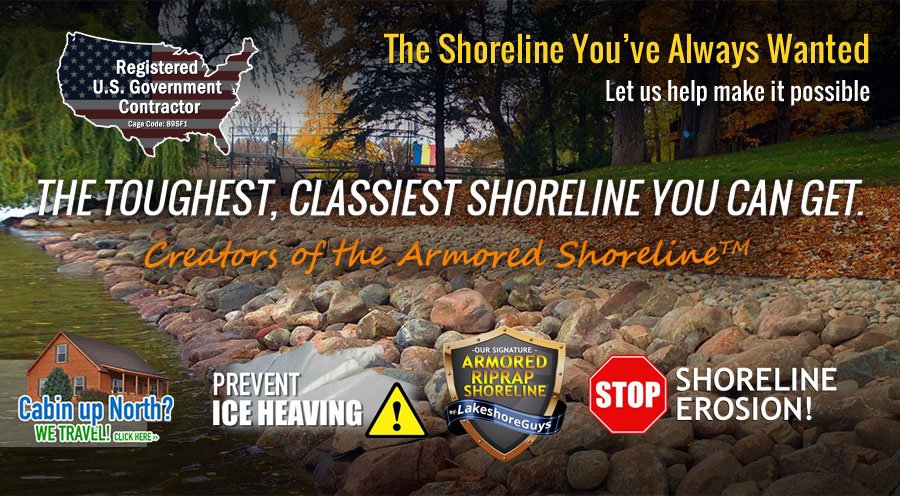What Is Riprap Stone?
Want an ugly shoreline that crumbles and erodes? Then hire a landscaper. But if you’re way past looking for quotes and want the toughest and most beautiful riprap shoreline – one that’s built once and built right by the best hands in the business – contact Lakeshore Guys today. We also build the toughest, finest boat ramps and staircases, in case you want even more ways to enjoy the perfect shoreline.
No, riprap isn’t Hip-Hop’s unpopular musical cousin.
Rather, “riprap” a catchall term to describe stones that you use to make an erosion-resistant shoreline. Sometimes it’s also referred to as riprap wall, seawall, revetment, or hard stabilization.

The rocks range in size from 6 to 30 inches in diameter. They also range in shape, because “riprap” can include a variety of stone types: granite, fieldstone, limestone, and trap rock, to name a few.

Now, all of that is what you might call the “dictionary” definition of riprap.
Here are a few things that lakeshore experts know about riprap stones:
Usually Fieldstone (also known as glacier stone or river rock) is the best type of rock for a riprap shoreline. It comes in a variety earthy colors, has smooth and rounded sides, and somehow just blends in perfectly to a Minnesota or Wisconsin shoreline.
Although crushed rock (e.g. limestone, trap rock, granite) can be considered riprap, it’s inherently so jagged that we steer away from it in favor of fieldstone.
Building a shoreline out of crushed rock may cause puncturing in the protective barrier of filter fabric (the layer of fabric between the earth and the rocks). Punctures in the filter fabric can cause your shoreline to collapse over time. Because of this, we recommend steering clear of crushed rock (especially limestone) altogether.
Limestone will raise the pH level of the water, and this can harm certain types of fish and aquatic plants.
Many types of crushed rock can quickly be broken down by the continual stress of our Midwestern freeze/thaw cycles. (Yet another reason to pick fieldstone.)
In our opinion, the “new & improved” definition of riprap should be: “Any natural fieldstone rock, ranging in size from 6 inches to 30 inches in diameter, which is used to minimize shoreline erosion.”


Again, that’s a stuffy definition. Our professional advice is simple: use fieldstone to create a riprap shoreline that prevents erosion, stands the test of time, doesn’t harm the ecosystem, and is a feast for the eyes.
Contact Lakeshore Guys® for the toughest, best-looking riprap shoreline money can buy.




